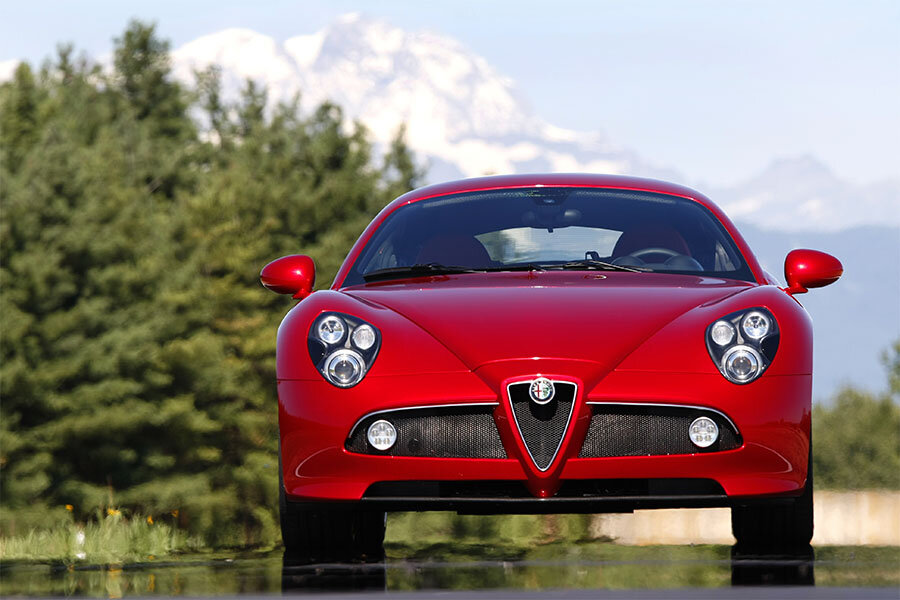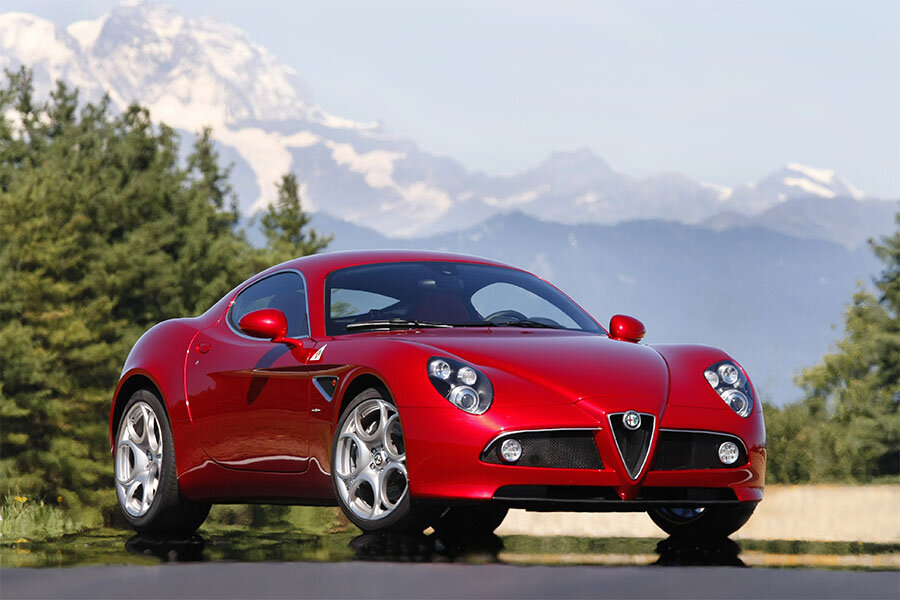Guide: Alfa Romeo 8C Competizione & 8C Spider - a Historical & Technical Appraisal
/BACKGROUND
In the pantheon of great Alfa Romeo sports cars, the 8C stands above all others.
Powered by Vittorio Jano’s legendary straight eight engine, the 8C 2300 (1931 to 1935) and 8C 2900 (1936 to 1941) won races all over the world including multiple victories at the Le Mans 24 Hours, Targa Florio and Mille Miglia. A 2.6-litre version was also used to power the Tipo B monoposto as raced by Scuderia Ferrari.
In the post-World War 2 era, arguably the most successful Alfa Romeo sports racing car was the 6C 2500 Competizione as driven by the Bornigia brothers to win the 1950 Targa Florio. Three weeks later, Juan Manuel Fangio finished third in another such car on the Mille Miglia.
Other models like the C52 and 6C 3000 CM were subsequently produced before Alfa Romeo closed their competition department in late 1953, but none were able to rekindle the glory of the 1930s.
Alfa Romeo’s new competition division, Autodelta, subsequently went on to win the 1975 World Sportscar Championship with the quasi-works T33/TT/12 campaigned by the Willi Kauhsen Racing Team, but by this time, prototype racing cars were far removed from their road-going counterparts and the World Championship was a shadow of its former self.
In homage to their great models of the past, Alfa Romeo displayed a stunning two-seat Coupe at the Frankfurt Motor Show in September 2003. Designed in-house at Alfa Romeo Centro Stile, the 8C Competizione was followed by an 8C Spider concept at the 2005 Pebble Beach Concours.
Reaction to the beautiful new 8C models was so positive that Alfa Romeo carried out a feasibility study for a limited production run of both variants.
As Alfa Romeo were not in a position to manufacture the 8C themselves, it was decided that final assembly should take place at the Maserati factory in Modena. Key components were sourced from Ferrari and Maserati who, at the time like Alfa Romeo, were owned by parent company, Fiat.
With the logistics organised, a production version was announced at the Paris Motor Show in October 2006. Starting in 2007, a batch 500 8C Competiziones would be built following which a run of 500 8C Spiders were made.
The model marked Alfa Romeo’s return to the US market after an absence of 13 years. Owing to the lack of an established Alfa sales network, 8Cs were sold in the US through Maserati dealers.
CHASSIS
The 8C was built on a new steel platform chassis made by ITCA Produzione in Grugliasco. It was essentially a mix of the outgoing Maserati Coupe / Spyder, the new Granturismo and several bespoke Alfa Romeo components.
Stressed carbonfibre was bonded to the steel central floor section to make up the passenger cell. Steel front and rear subframes supported the engine, gearbox and suspension.
At 2646mm, the wheelbase was shorter than any of the aforementioned Maseratis.
Similarly, the suspension was sharper, harder and sportier. The double wishbone arrangement shared its basic architecture with the Quattroporte but used custom bushes, geometry, springs and dampers.
Brembo supplied ventilated steel brake discs of 380mm for the front and 360mm at the rear. ABS was standard.
The 20-inch wheels mimicked Alfa’s cloverleaf logo. They measured 8.5-inches wide at the front, 10.5-inches wide at the rear and were shod with Pirelli P Zero tyres.
A 90-litre fuel tank was installed above the rear axle.
ENGINE / TRANSMISSION
The all-alloy Tipo F136 YC engine was a cross-plane, dry-sumped 90° V8 with four valve heads, dual overhead camshafts, variable timing and variable intake valves.
Assembled by Ferrari, it was essentially an enlarged and uprated version of the 4.2-litre unit used by the Maserati Quattroporte and Granturismo. Bore remained at 92mm but stroke was extended from 79.8mm to 88mm for an overall displacement of 4691cc (a gain of 447cc).
The compression ratio was 11.3:1 and multi-point indirect fuel-injection was employed.
Peak output was 450bhp at 7000rpm and 354lb-ft at 4750rpm.
A rear-mounted six-speed paddle shift gearbox was linked to the engine by a torque tube. It offered two manual modes (Normal and Sport) and three automatic models (Normal, Sport and Wet).
Sport modes left the exhaust bypass valves open, sharpened the throttle response, quickened the stability control and halved the shift times from four tenths of a second to two tenths of a second.
A limited-slip differential was fitted along with switchable traction control.
BODYWORK
Cosmetically, the 8C Competizione echoed some of the renowned Alfa Romeo sports cars of the fifties and sixties. Clustered headlights were inspired by the stacked arrangement used on the brace of Tipo 33 Stradale prototypes from 1967. The truncated tail was a modern interpretation of the Giulietta SZ Coda Tronca of 1961.
The 8C was an extremely curvaceous design with barely a straight line to be found anywhere; were it not for the new car’s modern (large) dimensions it could easily have been confused for a late 1960s creation.
The carbonfibre body was produced by ATR Group in Colonnella and remained remarkably true to the original 2003 concept. Subtle changes included revised aero, a new rear-hinged hood, Xenon headlights, standard wipers, mesh side vents and different wheels.
INTERIOR
The cockpit was a mix of aluminium alloy, leather and carbonfibre.
Housed directly behind the carbon-topped three-spoke steering wheel was a twin cowl carbon instrument binnacle that housed analogue gauges for road and engine speed. A digital read out in between relayed information such as oil temperature, water temperature, fuel level, which gear was selected, outside temperature and time.
Switchgear (much of which was sourced from Ferrari) was housed on alloy fascias either side of the steering wheel and on a carbonfibre centre console.
Carbonfibre bucket seats were upholstered in leather and offered manual adjustment only.
A lift up rear hatch gave access to the limited luggage area behind the seats.
OPTIONS
Standard exterior colours were Alfa Red and Black while Pearl Yellow and Special Competition Red were options. The full Maserati and Ferrari colour range was available at additional cost as Paint To Sample.
Other options included carbon ceramic brakes, twisted leather, a luggage set, Bose surround sound system with iPod connection, coloured brake calipers, satellite navigation, leather headlining and sports branding (painted cloverleafs on the front wings). There was also a full carbon kit to include a carbon driving zone.
WEIGHT / PERFORMANCE
The 8C Competizione weighed 1585kg and had a 0-62mph time of 4.2 seconds. The 186mph top speed was set at the Nardo proving ground in Italy.
PRODUCTION
Production of the 8C Competizione took place between 2007 and 2009. Despite receiving over 1400 orders for the car, Alfa Romeo stuck to the original plan of 500 units, all of which were left-hand drive.
8C SPIDER
Likewise, the 8C Spider which went into production immediately afterwards, was also over-subscribed. 1200 customers placed orders despite a list price that was more than 50% higher than the Coupe.
The production Spider was displayed at the Geneva Motor Show in March 2008.
It featured extra reinforcement to include a cross brace under the bonnet and carbonfibre windscreen frame. The new variant was set up with stiffer springs and roll bars but softer damping for a more compliant ride.
To save 14kg, carbon ceramic brakes were fitted as standard.
The two-layer electric fabric roof had to be manually released from the windscreen. Leather and carbonfibre roll hoops were an option.
Weight went up to 1675kg, the 0-62mph time increased to 4.5 seconds and top speed dropped to 180mph.
Production began in 2009 and ended in 2010.
COACHBUILT VERSIONS
In addition to the standard-bodied 8C variants, several customers ordered unofficial coachbuilt examples.
A unique Zagato-bodied TZ3 Corsa was unveiled at the 2012 Villa d’Este Concours and a small batch of C52-inspired Disco Volante’s were created by the revived Carrozzeria Touring.
Text copyright: Supercar Nostalgia
Photo copyright: Alfa Romeo - https://www.alfaromeo.com






































